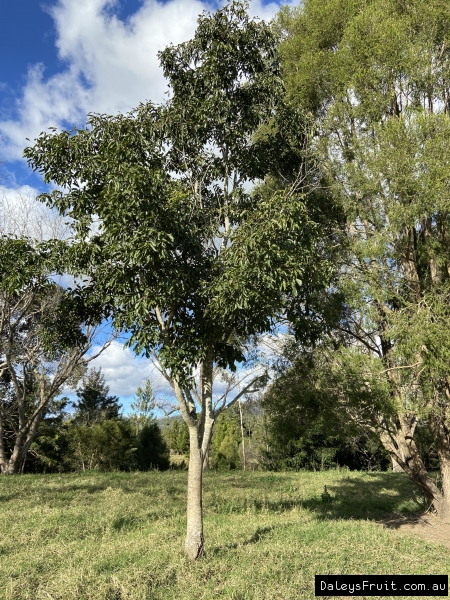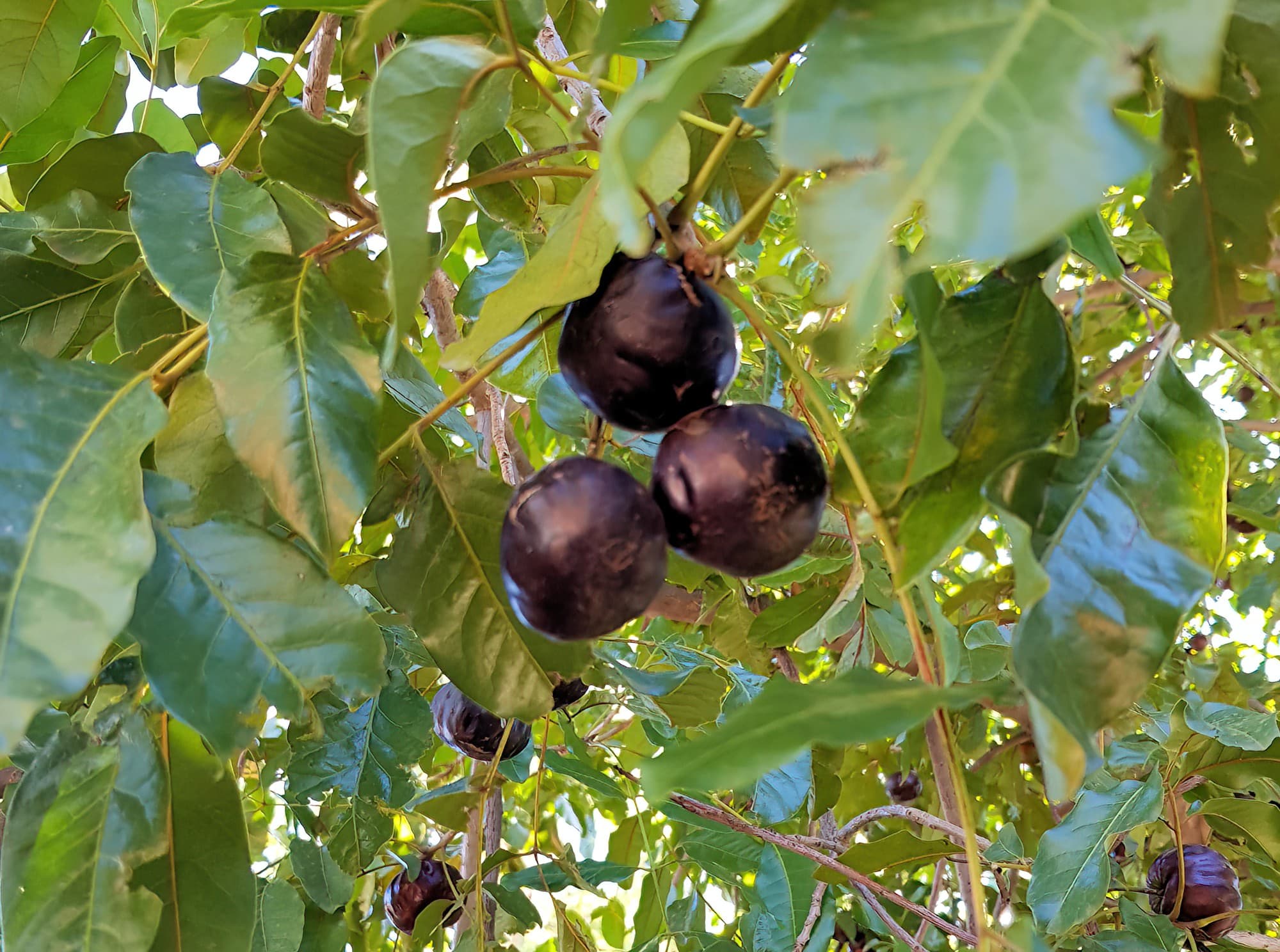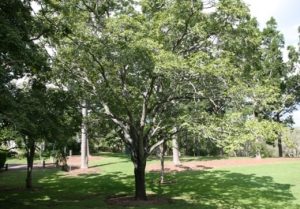
Cultivating the Crimson Jewel: A Comprehensive Guide to Growing Burdekin Plum Trees
The Burdekin plum tree (Pleiadenta burdekiniana), a native Australian treasure, offers a captivating blend of ornamental beauty and delectable fruit. With its glossy, deep green foliage, delicate white flowers, and striking crimson drupes, it’s a worthy addition to any garden, particularly in warmer climates. Beyond its aesthetic appeal, the Burdekin plum provides a unique, tart-sweet flavour that has been enjoyed by Indigenous Australians for centuries and is increasingly being appreciated by modern food enthusiasts. This comprehensive guide will equip you with the knowledge and techniques to successfully cultivate your own Burdekin plum tree, from selection and planting to harvesting and enjoying its bounty.
Understanding the Burdekin Plum: A Native Delight
The Burdekin plum is an evergreen tree native to the tropical and subtropical regions of Queensland, Australia. It thrives in areas with a distinct wet and dry season, often found along watercourses and in open woodlands. The tree itself is typically medium-sized, reaching heights of 5-15 meters, with a spreading canopy. Its leaves are ovate to elliptic, leathery, and glossy, providing year-round visual interest.

The true star, however, is its fruit. The Burdekin plum is a small, round drupe, approximately 2-3 cm in diameter, that ripens from green to a rich, deep crimson or purplish-red. The flesh is juicy and tangy, with a flavour profile often described as a cross between a plum and a cranberry, possessing a delightful tartness balanced by a subtle sweetness. The single, hard seed in the centre is easily removed.
Cultivation Requirements: Setting the Stage for Success
To ensure your Burdekin plum tree flourishes, understanding its specific needs is paramount.
Climate and Location:
Burdekin plums are well-suited to tropical and subtropical climates, requiring warm temperatures and protection from prolonged frost. They perform best in areas with a distinct wet season, as they appreciate consistent moisture. Ideal locations are sunny, receiving at least 6-8 hours of direct sunlight daily. While they can tolerate some shade, fruiting may be reduced.
Soil Preferences:
These resilient trees are not overly fussy about soil, but they do prefer well-draining, fertile loamy soils. They can tolerate a range of soil types, including sandy and clay soils, as long as drainage is adequate. Improving the soil with organic matter, such as compost or well-rotted manure, before planting will provide a significant boost to growth and fruiting. Avoid waterlogged conditions, as this can lead to root rot.
Watering:

Once established, Burdekin plum trees are relatively drought-tolerant. However, consistent watering is crucial during the establishment phase and particularly during dry spells to encourage healthy growth and fruit development. Water deeply and regularly, allowing the soil to dry out slightly between waterings. During the fruiting season, consistent moisture is especially important.
Fertilizing:
A balanced, slow-release fertilizer applied in early spring and again in late summer will provide the necessary nutrients for healthy growth and abundant fruiting. Avoid over-fertilizing, which can lead to excessive leafy growth at the expense of fruit production. Organic mulching around the base of the tree will help retain moisture and suppress weeds, further benefiting the tree.
Pruning:
Pruning is generally minimal for Burdekin plum trees. Light pruning can be done to maintain shape, remove dead or diseased branches, and improve air circulation within the canopy. The best time to prune is after the fruiting season has ended, typically in late summer or early autumn.
Pollination:
Burdekin plum trees are generally self-pollinating, meaning a single tree can produce fruit. However, planting multiple trees in proximity can sometimes lead to increased fruit set and larger yields due to cross-pollination.
Planting Your Burdekin Plum Tree: From Seedling to Sapling
Choosing a Healthy Tree:
When purchasing a Burdekin plum tree, opt for a healthy, vigorous specimen from a reputable nursery. Look for trees with good leaf colour, no signs of pests or diseases, and a well-developed root system.
Planting Process:
- Site Selection: Choose a sunny location with well-draining soil.
- Hole Preparation: Dig a hole that is twice the width and depth of the tree’s root ball.
- Amending the Soil: Mix the excavated soil with generous amounts of compost or organic matter.
- Positioning the Tree: Gently remove the tree from its pot and loosen any circling roots. Place the tree in the centre of the hole, ensuring the top of the root ball is level with the surrounding soil.
- Backfilling: Fill the hole with the amended soil, tamping it down gently to remove air pockets.
- Watering: Water the tree thoroughly immediately after planting to settle the soil and reduce transplant shock.
- Mulching: Apply a layer of organic mulch around the base of the tree, keeping it a few inches away from the trunk.
Pests and Diseases: Vigilance and Prevention
Burdekin plum trees are generally quite hardy and resistant to pests and diseases. However, like any plant, they can occasionally be affected.
- Aphids and Scale Insects: These sap-sucking insects can sometimes infest young shoots. They can often be controlled with a strong spray of water or by introducing beneficial insects like ladybugs. For more persistent infestations, insecticidal soap can be used.
- Fruit Fly: In some regions, fruit fly can be a problem. Covering the developing fruit with fine mesh bags or using fruit fly traps can help prevent infestation.
- Root Rot: This is primarily caused by overwatering and poor drainage. Ensuring good drainage and avoiding waterlogged conditions is the best preventative measure.
Regular inspection of your tree will allow you to identify any potential issues early on, making them easier to manage.
Harvesting Your Crimson Treasure: Knowing When and How
The Burdekin plum typically fruits in the warmer months, with the harvest season often occurring from late spring through to summer, depending on your specific climate.
Signs of Ripeness:
The most obvious indicator of ripeness is the fruit’s colour. Look for the deep crimson to purplish-red hue. The fruit will also become slightly soft to the touch when gently squeezed. The aroma will also become more pronounced and sweet.
Harvesting Technique:
Gently twist or snip the ripe fruit from the branches. It’s best to harvest when the fruit is firm but yielding. Avoid pulling forcefully, as this can damage the branch.
Storage:
Burdekin plums have a relatively short shelf life once picked. They can be stored in the refrigerator for a few days. For longer storage, consider processing them into jams, jellies, or drying them.
The Culinary Delights of Burdekin Plum
The unique flavour of the Burdekin plum makes it a versatile ingredient in the kitchen. Its tartness lends itself well to dishes where a bright, zesty element is desired.
Fresh Consumption:
While some may find them too tart to eat raw in large quantities, a few fresh Burdekin plums can be a refreshing treat.
Cooking and Preserving:
The true magic of the Burdekin plum unfolds when cooked. Its flavour intensifies and mellows, making it perfect for:
- Jams and Jellies: The high pectin content makes it ideal for setting into delicious jams and jellies.
- Sauces and Chutneys: Its tartness pairs wonderfully with sweet and savoury dishes.
- Pies and Tarts: Incorporate them into baked goods for a burst of flavour.
- Syrups and Liqueurs: The vibrant colour and tangy flavour can be captured in homemade syrups and infused liqueurs.
- Desserts: Use them in crumbles, cobblers, or as a topping for ice cream.
Recipes Featuring Burdekin Plum
Here are a few simple recipe ideas to get you started with your Burdekin plum harvest:
1. Simple Burdekin Plum Jam
Ingredients:
- 1 kg Burdekin plums, washed, pitted, and roughly chopped
- 750g granulated sugar
- Juice of 1 lemon
Instructions:
- Combine the chopped plums and lemon juice in a large, heavy-bottomed saucepan.
- Cook over medium heat, stirring occasionally, until the plums soften and release their juices (about 15-20 minutes).
- Add the sugar and stir until dissolved.
- Bring the mixture to a rolling boil and cook, stirring frequently, for 20-30 minutes, or until the jam reaches setting point (test by placing a small amount on a chilled saucer; it should wrinkle when pushed).
- Skim off any foam from the surface.
- Ladle the hot jam into sterilised jars, seal tightly, and let cool.
2. Burdekin Plum Crumble Topping
Ingredients:
- 2 cups Burdekin plums, pitted and halved
- 1/4 cup granulated sugar (adjust to taste)
- 1 tablespoon cornflour
- For the Crumble:
- 1 cup plain flour
- 1/2 cup rolled oats
- 1/2 cup brown sugar
- 1/2 cup cold butter, cubed
Instructions:
- Preheat oven to 180°C (350°F).
- In a bowl, toss the halved Burdekin plums with sugar and cornflour. Pour into a greased baking dish.
- In another bowl, combine flour, oats, and brown sugar for the crumble.
- Add the cold butter and rub it into the dry ingredients with your fingertips until the mixture resembles coarse breadcrumbs.
- Sprinkle the crumble topping evenly over the plums.
- Bake for 30-40 minutes, or until the topping is golden brown and the fruit is bubbling. Serve warm with custard or ice cream.
3. Burdekin Plum Syrup
Ingredients:
- 2 cups Burdekin plums, pitted and halved
- 1 cup water
- 1 cup granulated sugar
Instructions:
- Combine the plums and water in a saucepan. Bring to a boil, then reduce heat and simmer for 20 minutes until the plums have softened and released their juice.
- Strain the mixture through a fine-mesh sieve, pressing gently on the solids to extract as much liquid as possible. Discard the solids.
- Return the strained liquid to the saucepan. Add the sugar and stir until dissolved.
- Bring to a gentle simmer and cook for 10-15 minutes, or until slightly thickened.
- Let cool and store in a clean, sterilised bottle in the refrigerator. Use over pancakes, ice cream, or in cocktails.
Conclusion: A Rewarding Cultivation Journey
Growing a Burdekin plum tree is a rewarding experience that connects you with a unique piece of Australian heritage. With its relatively easy care requirements and the promise of delicious, vibrant fruit, it’s a tree that offers both beauty and culinary satisfaction. By understanding its needs and providing a little care, you can enjoy the sweet and tangy bounty of the Burdekin plum for years to come, transforming your garden into a source of both natural wonder and delightful flavours.

